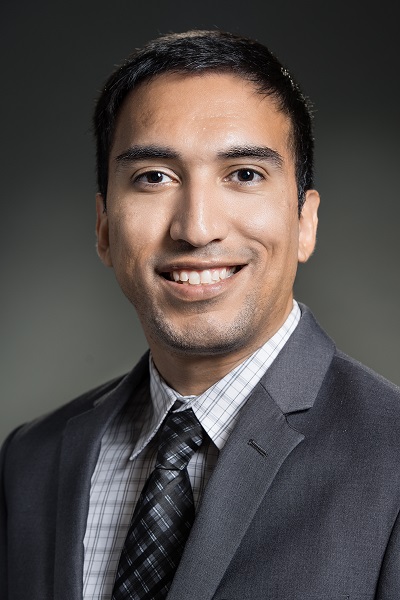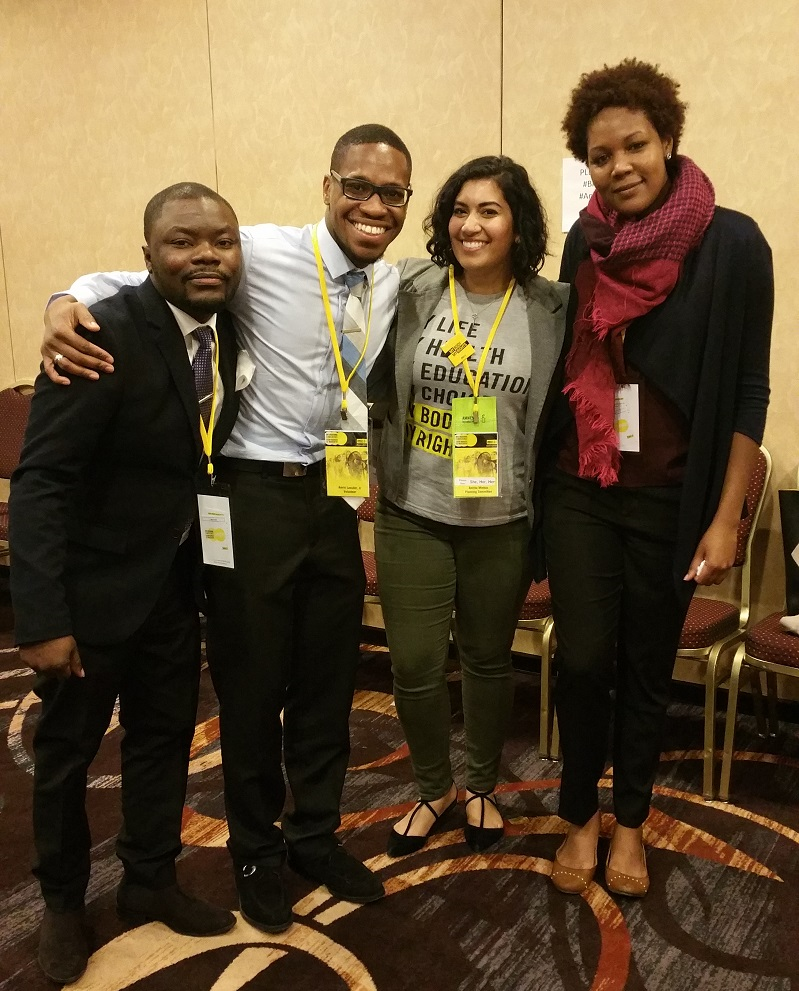From February 1 through May 1, Nu Omicron–the honor society of the School of Criminal Justice–will be collecting items to donate to the House of Ruth Maryland, recognized as one of the nation’s most comprehensive domestic violence centers. The campus drop-off location for donations is in the Liberal Arts and Policy Building, Room 538. For more information about this collection drive, contact Vickie Sneed at vsneed@ubalt.edu.
Category Archives: Uncategorized
Reflections on my Carnegie African Diaspora Fellowship in South Africa
Written by Johannes (Jannie) Botes
(This article was originally written for publication in the University System of Maryland’s The Faculty Voice.)
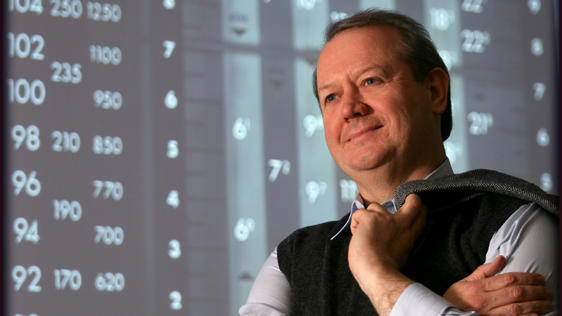
Jannie Botes is an associate professor in the College of Public Affairs’ School of Public and International Affairs.
The Fellowship
In the fall of 2014, I was honored to receive a Carnegie African Diaspora Fellowship Program (CADFP) award and spent four summer months in South Africa at the beginning of 2015. I obtained a sabbatical from the University of Baltimore (UB) while teaching at the University of Stellenbosch, my alma mater. I was also doing some research on South Africa’s National Development Plan (NDP) that is supposed to remedy a host of economic and societal problems by 2030.
Before discussing my Fellowship experience in South Africa, I would like to share some more detail about the CADFP, because it was created based on some very interesting research by Dr. Paul Tyambe Zaleza, a professor of African-American studies and history at Loyola Marymount University, which was published as a report for the Carnegie Corporation of New York. His research was based on the nature and dynamics of the engagement of the African academic diasporas in the United States and Canada. This research–published in 2013–found that between 20,000-25,000 African-born academics are faculty members in American colleges and universities.
The CADFP was created with a goal of turning the continent’s “brain drain” into “brain circulation” by funding 100 African-born scholars currently based in the United States and Canada to collaborate with host universities in Africa on teaching, curriculum building, research, graduate training, and mentoring, over a two year period. Public and private higher education institutions in Ghana, Nigeria, Kenya, Tanzania, South Africa and Uganda were invited to submit project requests and interested African-born scholars in the US and Canada were invited to apply for the CADFP. The program is managed by the Institute of International Education (IIE), in partnership with Quinnipiac University and funded by the Carnegie Corporation of New York. I was also pleased to note on the website for this program that it is now being extended beyond the original three rounds of applications.
I left South Africa in 1987, when the racial segregation policy of ‘apartheid’ was still in full swing. At that time, I was working for the South African Broadcasting Corporation (SABC) as a television producer and anchor, and was removed from live on-air broadcasting in 1986 due to critical questions I raised about apartheid and the future of South Africa. I received a Fulbright Scholarship to study in the US and ended up at George Mason University, in what became the first Ph.D. class of ten people, at the then Institute for Conflict Analysis and Resolution (ICAR). I was therefore an example of what Dr. Zaleza spelled out in his Carnegie report, as being part of the brain drain from Africa. Hence, I was delighted to return to Stellenbosch, potentially to be part of what he called a “brain gain” and “brain mobility.” So beginning in February of 2015, I replaced Professor Pierre du Toit, who was on a pre-retirement sabbatical, and taught a course titled Ethnic and Cultural Factors in Conflict, in addition to teaching negotiation seminars and advising students on potential overseas study.
Reflecting on South Africa
Returning to South Africa for four months–much longer than I was ever able to visit the country and my hometown over nearly three decades–was in some ways quite emotional and, in other ways, disconcerting. It is now 25 years since Nelson Mandela was released from jail in 1990, and 21 years since Mandela became the President of South Africa and the new South Africa was born. Mandela’s expertise in political peace-building among the various population groups of South Africa is sadly not evident among the current political leadership of the African National Congress (ANC) under President Zuma. Mandela will be remembered with admiration for his cross-cultural encounters. To name two examples: he met with the wives of former apartheid leaders; and he stepped on the World Cup rugby field with a Springbok jersey when South Africa was in the 1995 finals (as portrayed in the film “Invictus” with Matt Damon, and Morgan Freeman, playing Mandela). The Springbok (Springbuck), a deer, is the national emblem of the South Africa Rugby Union, and by identifying with this icon and not insisting on replacing it shortly after the new South Africa was created, Mandela was making this symbol inclusive and part of all of South Africa, for which he was widely hailed.
The alarming part of the trip was that it is clear that after 20 plus years of the new South Africa, Mandela’s vision of a “rainbow nation,” a coalition between the four racial and ethnic groups of South Africa (Black, Colored, Indian and White) is now endangered by a set of quite worrisome problems. The unemployment rate in South Africa is now 25%, and by some estimates it is unofficially closer to 40%. Youth unemployment is especially troublesome and, more so, for the so-called “born free” generation, people born after the first fully democratic elections in 1994, who are by some estimates close to 40% of the population. In a just published book, What If There Were No Whites in South Africa?, South African newspaper editor, Ferial Haffajee, argues that black South Africans, and especially black “born frees” are obsessed with whiteness and white privilege. She debunks the many myths and distorted notions concerning white dominance and power, including a false consciousness that whites and blacks perceive their numbers as roughly equal. These distorted narratives are contradicted by the statistical evidence, in that whites are a declining, small minority, which was 10.9% of the population in 1996, and shrank to 8.4% in 2014.
During my stay, South Africa was also severely criticized by other African countries for xenophobic attacks on foreigners in Durban and Johannesburg, leading to wider attacks on foreigners in the country; this is in part another sign of economic stress. After 1994, South Africa became a place of refuge from political and economic hardships in other African countries. For example, online resources suggest that there are more than one million Zimbabweans who fled to South Africa, because the unemployment rate in Zimbabwe is speculated to be in excess of 50% (and by some estimates as high as 80%). What is quite troubling is that after two decades the peacemaking efforts in a number of African countries, including South Africa, Mozambique, Burundi and Zimbabwe, are faltering; the outlier here is Namibia.
Violent crime is endemic in South Africa, and more and more people are pointing to political corruption as a problem that will eventually lead to violence between the economic “have and have nots.” On December 10th, the US Institute of Peace, in conjunction with the US State Department, held a discussion on “rallying the world against corruption” and pointed out that endemic corruption undermines the rule of law and weakens legitimate government institutions. In 2013, the then Minister of National Planning in South Africa, Trevor Manuel, identified corruption as the biggest threat to the National Development Plan, which is supposedly designed to cure South Africa of its socio-economic ills. South Africa is also no longer the continent’s largest economy (Nigeria is). Two rating agencies have recently cut South Africa’s debt to the lowest investment grade, which endangers the country of slipping into a junk bond rating. In fairness to the current regime, the structural inequalities in South Africa run deep and the expectations associated with liberation were so high that a certain degree of disappointment and social turmoil would have set in by now, regardless of the political leadership in charge of the country.
Academic Climate
Let me return to Stellenbosch and my experience teaching at the University. The town is picturesque, comprised of old Cape Dutch architecture surrounded by mountains in the heart of the wine industry in South Africa, and located about 30 miles from Cape Town, where Table Mountain was named one of the Seven Natural Wonders of the World in 2012. The University does not have a program related to conflict, as such, and I was teaching in the Political Science Department. I taught my course, as I do at the University of Baltimore, in a way that expects a lot of participation and presentations from the graduate students. I was on the whole impressed with their effort and enthusiasm, including the depth of our discussions. It was a culturally diverse and academically strong group of students; the only South African ethnic group not represented was Indian South Africans. Notably, one of my students, William Clayton, was awarded the prestigious South Africa Washington International Programme scholarship, which consists of leadership seminars, a community service project, and a two month internship in Washington, DC.
South Africa was one of the case studies in this course on ethnic and racial conflict. As someone who studied at the University of Stellenbosch in the 1970s, one of the most rewarding aspects of the teaching was to learn from these students, who are mostly in their twenties, how they perceived the current South Africa and the changes that have occurred in the country over the past 25 years. In turn, they wanted to know how South Africa is perceived in the world, and were disappointed to find out that what happens in South Africa is no longer automatically world news, especially now that religious conflict has focused attentions elsewhere. For example, the recent student unrest that led to the University of Stellenbosch changing its language policy, was not world news, except for the fact that it made the news in England.
Other than Cape Town, Stellenbosch is the oldest European settlement in the Western Cape (settled in 1679, about the same time as the American colonies) and was named after a Dutch governor, Simon van der Stel. For anti-apartheid activists, Stellenbosch was perceived as an enclave protecting the interests of the architects of apartheid, and by extension, the language of Afrikaans (a language that developed out of the original Dutch-speaking settlers) was perceived as the language of the oppressor. English was already the language of instruction at the graduate level at Stellenbosch, but it was the only remaining Afrikaans university in South Africa that had Afrikaans at the undergraduate level with English spoken summaries or English overhead summaries on a projector. After a year of student protests around this topic, the University announced recently that all undergraduate courses will be offered in both languages in the new academic year. While I was teaching at Stellenbosch, Cape Town University succumbed to student protests and removed the statue of Cecil John Rhodes (a British colonialist and a core member of the British Imperial history in South Africa). Again, my students were surprised that such incidents are no longer news beyond Britain, and perhaps The Netherlands, which both have historical ties to South Africa.
The area of education in South Africa has many challenges, especially at the secondary and high school stages, where a majority of schools, according to observers, produce dismal results that spell disaster for the future. Recently, the universities went through a period of major protests, one of which was called “Fees Must Fall.” While promising free education at the university level for years, the ANC government actually increased student tuition for 2016, which lead to such disturbances, that some universities had to push back the end of year exams to the beginning of 2016.
Student and faculty at universities, as indeed the whole country, also suffer from other infrastructure challenges. For example, soon after I arrived at the University, I had the scary experience of standing in the copy room in the middle of the building when there was a total power outage. After a minute of struggling to get back to my office, the lights went on and I was later told that the University and so many other institutions in the country have had to create their own backup power systems. The government was informed under the prior administration of President Thabo Mbeki that the country is outgrowing its supply of electricity, and nothing was done to increase generation capacity until it was too late. So while I was in the town, the so-called ‘load shedding’ twice weekly would interfere with academic activities, as well as lead to traffic congestion.
A final note, that might be interesting to university faculty members in the US, is that South Africa’s Department of Higher Education has a special subsidy fund for universities from which all peer reviewed research is funded, including articles, books, and also Master and Doctoral theses; additionally, some researchers fund their work from private sources and even overseas foundations. Approximately 25% of the University of Stellenbosch’s total budget is in this way funded by the state. Each university in the country has its own policy as to which degree an article or book or patent rights are paid out to the individual, who must use the funds for research purposes and not to cover personal expenditures.
My research on the National Development Plan will focus on what is ironically the last item spelled out in the document itself – namely, the improvement of race relations in South Africa. I am grateful for the opportunity provided by the Carnegie African Diaspora Fellowship Program and the University of Baltimore to make this possible. Based on my experience, I am hopeful that this program will indeed have benefits to universities in Africa and will inspire Africans to contribute to their countries of origin.
Learn more about Prof. Botes.
From capstones to caps and gowns
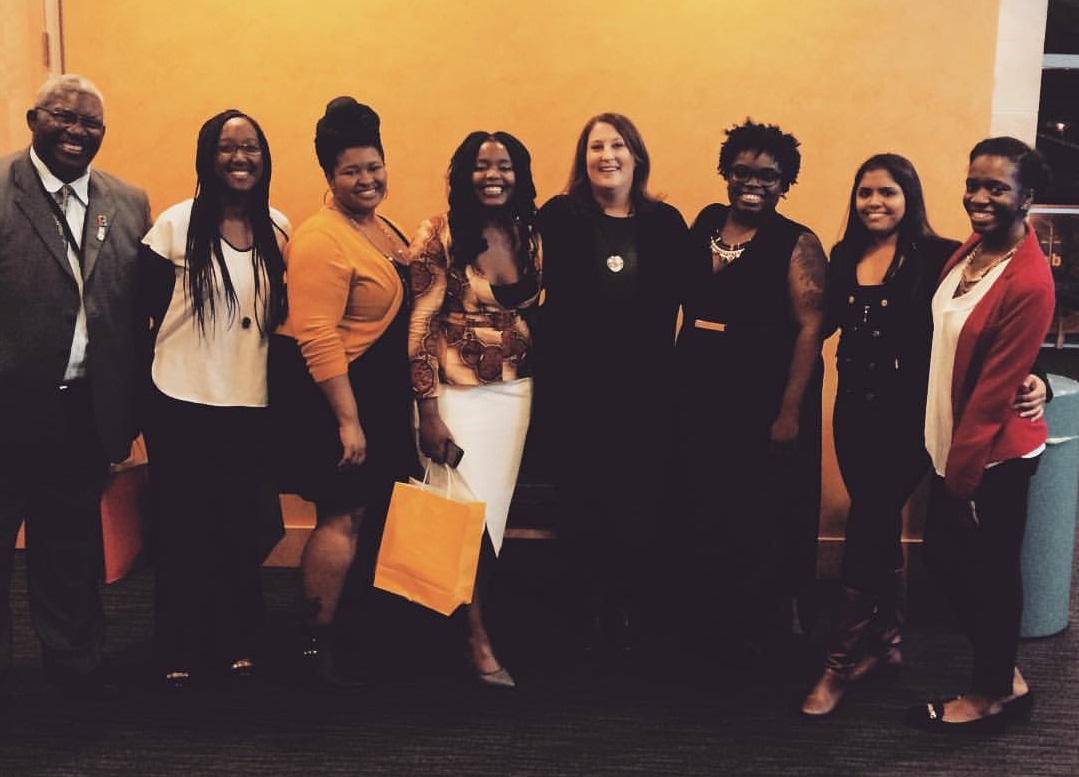
Pictured l. to r.: Chikongola Linton, Jasmine Stocks, Latrina Bowman, Vanessa Mndolo, Assistant Professor Carla Barqueiro, Bijan Davis, Elizabeth Mohamed and Randa Collins. (graduates not pictured: Christophe Mazur and Jessica Wightman)
On Friday, Dec. 11 and Saturday, Dec. 12, the fall 2015 graduates of the masters programs in Negotiations and Conflict Management (CNCM) and Global Affairs and Human Security (GAHS), gave their final capstone presentations in the Wright Theater of the Student Center to an audience of faculty, classmates, family and friends. The presentations were based on individual research papers developed throughout the semester as part of each program’s capstone course, taught by Adjunct Professor Kevin DeBell (CNCM) and Assistant Professor Carla Barqueiro (GAHS). Topics ranged from assessing effectiveness of alternative dispute resolution initiatives in the federal government to analyzing the impact of educational reform in Ghana to assessing responses to human trafficking in Thailand.
Following the presentations on Saturday afternoon, graduates and their families from both programs attended a celebratory dinner organized by the Global Affairs and Human Security Student Association headed by Latrina Bowman, and the Negotiations and Conflict Management Student Association led by Adnan Hameed. Associate Professor Sascha Sheehan, who is the director of both graduate programs, congratulated all of the graduates, thanked faculty, and highlighted the role family members and friends played in providing support and encouragement to the graduates throughout their studies. The CNCM and GAHS graduates will receive their degrees this Wednesday, Dec. 16 at UB’s fall 2015 commencement ceremony.
UB and community partners, helping others to win

Pictured l. to r. : Donna Glenn (graduate), Dr. Renita Seabrook, LeShone Stevenson (graduate) and Roshanna Turner (graduate).
On Monday, Dec. 7, friends, family, distinguished guests and members of the UB community gathered to honor and celebrate the third graduating class of the “Reasoning & Rehabilitation 2 For Girls and Young Women” (R&R2) program. Donna Glenn, LeShone Stevenson and Roshanna Turner were honored for their successful completion of the R&R2 class, which is part of Helping Others 2 Win (HO2W), an experiential learning environment that gives pre- and post-release adult female offenders the necessary tools for successful reeentry. The HO2W program was established by Renita Seabrook, associate professor in UB’s School of Criminal Justice, as part of her fellowship with the Open Society Institute-Baltimore. Seabrook’s HO2W program is an extension of Alternative Directions, Inc., a Baltimore non-profit that helps men and women in prison and those leaving prison, become independent, responsible citizens.
The ceremony included a welcome and closing by Dr. Seabrook, remarks from College of Public Affairs Dean Roger Hartley , comments from the graduates and an inspiring message of hope and encouragement delivered by guest speaker Senator Catherine E. Pugh.

Senator Catherine E. Pugh served as guest speaker at the “Reasoning & Rehabilitation 2 For Girls and Young Women” graduation ceremony on Dec. 7.
The College of Public Affairs brings home the 2015 Bowphy!
Thanks to all of the generous donations made to the College of Public Affairs during UB’s Giving Tuesday campaign known as #BowOnPoe, Dean Roger Hartley brought home the coveted Bowphy for being the college that received the highest number of gifts. Way to go CPA!
A global movement observed on the Tuesday following Thanksgiving, Giving Tuesday is the kickoff to the charitable season when many people focus on their holiday and end-of-year giving. Last year, UB decided to join the movement and launched it’s own Giving Tuesday campaign, #BowOnPoe, a day that celebrates and supports giving back to the University. And for every gift made that day, we put a blue bow on the Edgar Allen Poe statue on UB’s Gordon Plaza. All contributions made to the #BowOnPoe campaign on Giving Tuesday will provide direct, student-focused support for each of UB’s four schools—the Yale Gordon College of Arts and Sciences, the College of Public Affairs, the Merrick School of Business, and the School of Law. But there can only be one Bowphy winner–and this year, it’s us! 🙂
UB alum Efrain Solis named to Board of Examiners for 2015 Malcolm Baldrige National Quality Award
School of Health and Human Services alum, Efrain Solis, B.S. ’10, M.S. ’12, has been named to the Board of Examiners for the 2015 Malcolm Baldrige National Quality Award by The Commerce Department’s National Institute of Standards and Technology (NIST). The Baldrige Award is the nation’s highest honor for organizational innovation and performance excellence.
Solis, a Senior Project Manager at Memorial Hermann Sugar Land in Sugar Land, TX, was appointed to the board by the NIST Director. The examiner board is comprised of more than 350 leading experts competitively selected from industry, professional, trade, education, health care and nonprofit (including government) organizations from across the United States, and is responsible for reviewing and evaluating applications submitted for the Baldrige Award, as well as other assessment-related tasks.
Networking event offers Health Systems Management students a jump start on their career
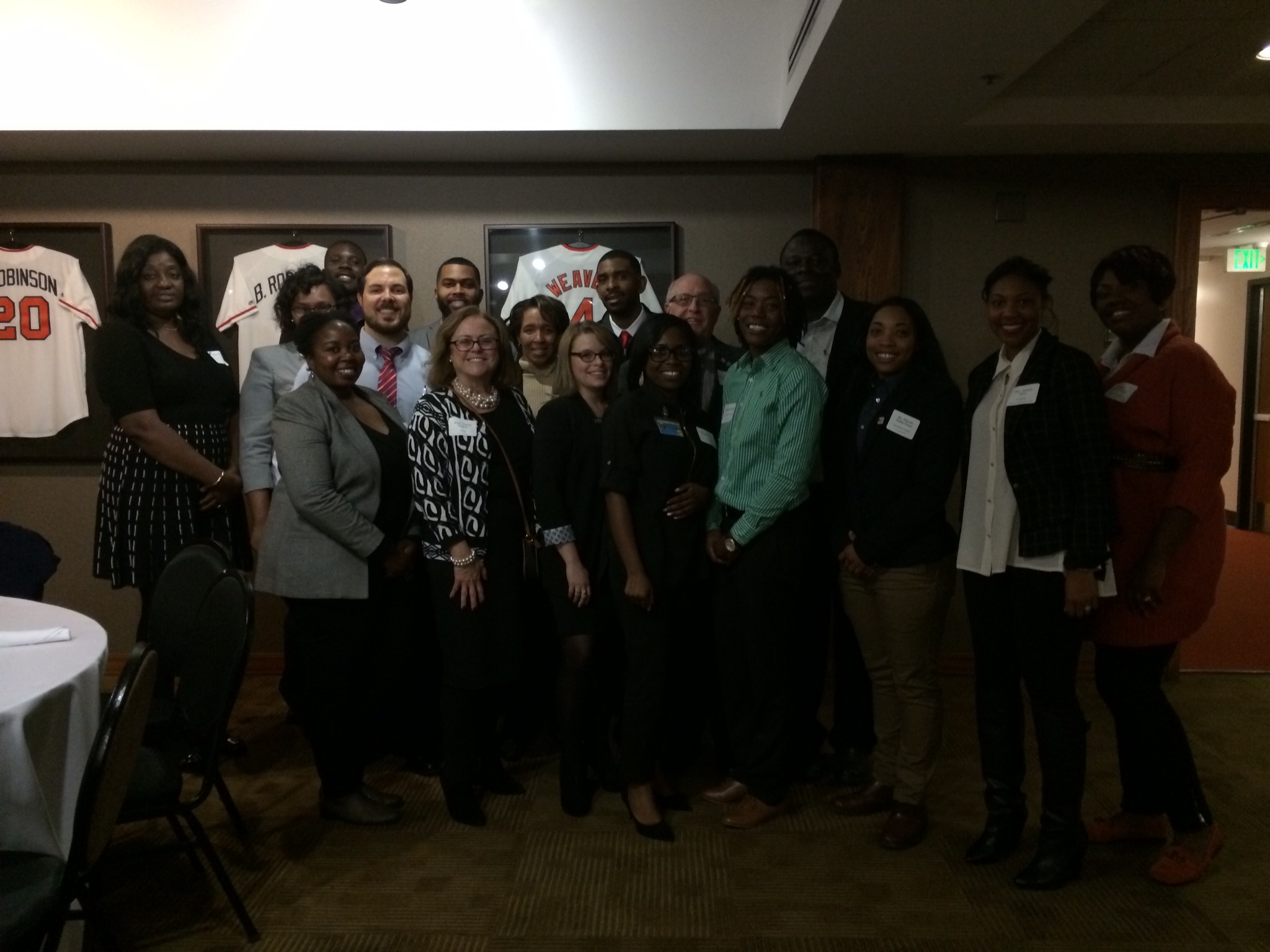
School of Health and Human Services Executive Director Tina DiFranco (front row, second from left) and Lecturer Alan Weisman (back row, second from right) joined Health Systems Management students at a Maryland Association of Health Care Executives networking and career development event held at Camden Yards.
On Thursday, Nov. 19, students from the Health Systems Management program attended a Maryland Association of Health Care Executives (MAHCE) networking and career event held at Camden Yards. The event included a cocktail reception, dinner and tour of the ballpark, a networking hour and a presentation on career development by Bill Haylon, CEO of Leaders for Today.
Also in attendance were School of Health and Human Services Executive Director Tina DiFranco, and School of Health and Human Services Lecturer Alan Weisman, B.S. ’71, M.A. ’91. “UB was very well represented and the students networked the entire evening,” DiFranco said. “So proud of them!!”
Amnesty International conference draws 25+ UB students
Written by Latrina Bowman, GAHSSA president and Global Affairs and Human Security graduate student

UB’s Global Affairs and Human Security Student Association (GAHSSA) served as host committee at the 2015 Amnesty International Mid-Atlantic Regional Conference. Pictured l. to r.: Latrina Bowman (GAHSSA president), Kevin Lassiter (GAHSSA External Affairs Officer), Sunjeev Bery (Advocacy Director, Middle East and North Africa at Amnesty International) and Nat Abu-Bonsrah (GAHSSA Secretary).
On November 14 and 15, Amnesty International USA held its Mid-Atlantic Regional Conference right here in Baltimore. Titled “From Moment to Movement,” the conference brought together activists and organizations from around the region, and featured plenaries, keynote speakers, interactive workshops, and networking opportunities all focused on human rights issues in the United States and around the world.
The College of Public Affairs was well represented at the conference with over 25 students from the Global Affairs and Human Security, Negotiations and Conflict Management, and Master of Public Administration programs in attendance. Executive board members from UB’s Global Affairs and Human Security Student Association (GAHSSA) volunteered at the conference in exchange for free registration, while other UB students were able to fund their attendance through the Center for Student Involvement and the College of Public Affairs Dean’s Student Development Fund.
GAHSSA served as host committee at the conference which provided GAHSSA members with an ideal opportunity to connect with Amnesty International leaders and other organizations in the hopes of bringing more opportunities like this to all UB students. To that end, GAHSSA will host an Amnesty International Interest Meeting here on campus on Wednesday, Dec. 2 to discuss plans for forming a Baltimore chapter. For more information on the meeting, contact Latrina Bowman at latrina.bowman@ubalt.edu or visit https://www.facebook.com/events/567011823453640/.
Freshman profiled in The Baltimore Sun for reaching teen audience through her social justice magazine
University of Baltimore freshman Evelyn Atieno was recently profiled in The Baltimore Sun for her startup magazine, Affinity, designed for the socially conscious teen. 
“Affinity, published online and in print (through a printed-on-demand service), presents itself as a magazine ‘for the social teen,’” the Sun writes. “Articles from young contributors cover issues such as intersectional feminism, white privilege, LGBT rights, school shootings and mental illness.”
“I don’t want it to be a Time magazine. I don’t want it to be a Seventeen magazine. I just want it to be authentic,” Atieno, an international studies major, tells the Sun. “I want teenagers to be able to say what they’re thinking about the world.”
Read the Baltimore Sun article.
Learn more about Affinity Magazine.
School of Criminal Justice honors society goes all out to support the community

Pictured l to r: Kate Kafonek (Nu Omicron member), Vickie Sneed (Nu Omicron treasurer), Chris Brees-Rostveit (Nu Omicron president), Cahrylene Phyall (FOC president) and Louise Gibson (FOC office manager)
Nu Omicron, the honors society of the School of Criminal Justice, has been very busy supporting the local community this fall. Their first endeavor was organizing a clothing drive to benefit the Friendship Outreach Center (FOC), which provides food and clothing to families in need in the Baltimore metropolitan area. Criminal Justice Associate Professor Renita Seabrook, who sits on the FOC board of directors, helped to connect Nu Omicron with the center, and within a few short months the honors society has collected and donated over 9,000 items of clothing to FOC!
(If you’d like to donate clothing to FOC, Nu Omicron will be accepting donations Monday through Friday from 12-5 p.m. in LAP, Room 538 until Dec. 14.)
Nu Omicron is also coordinating the School of Criminal Justice’s contributions to UB’s annual holiday food drive. The UB Food Drive, benefitting the Maryland Food Bank and the Lawyers’ Campaign Against Hunger, asks members of the UB community to drop off canned and/or nonperishable food items in the boxes found in the University’s main buildings. Nu Omicron has already collected nearly 400 nonperishable items to be donated to the drive, and will continue to collect donations throughout the remainder of the fall semester. The UB Food Drive is happening now and will continue through Dec. 18.
Learn more about Nu Omicron.
Learn more about the UB Food Drive.




